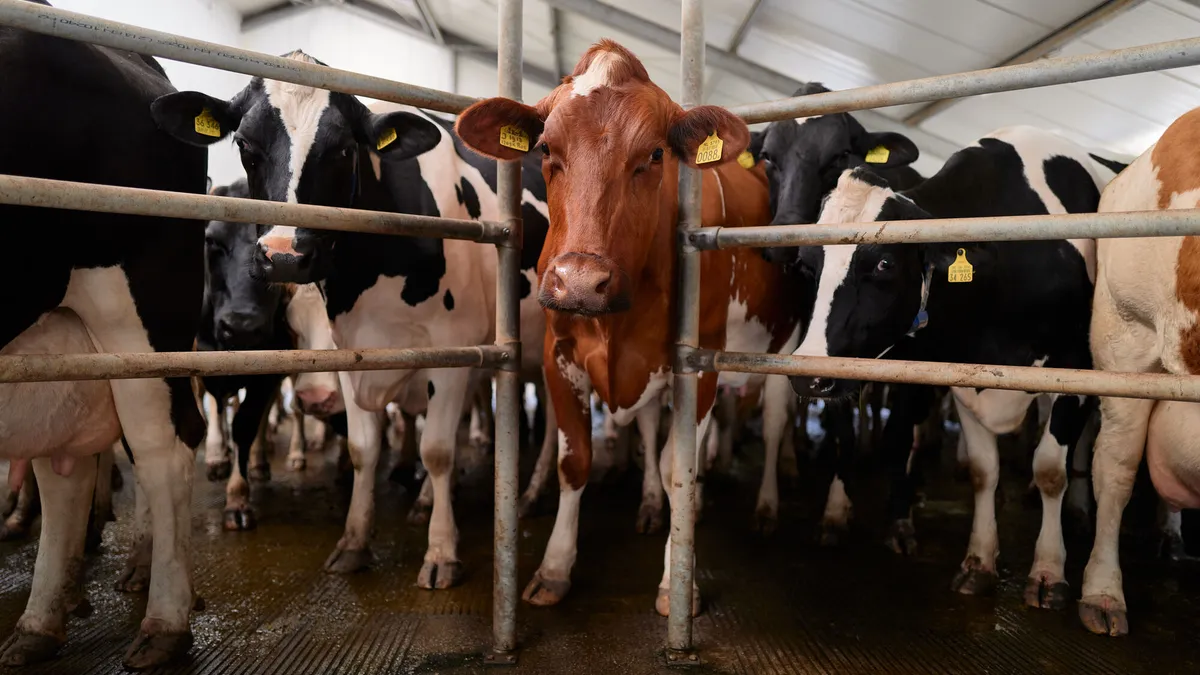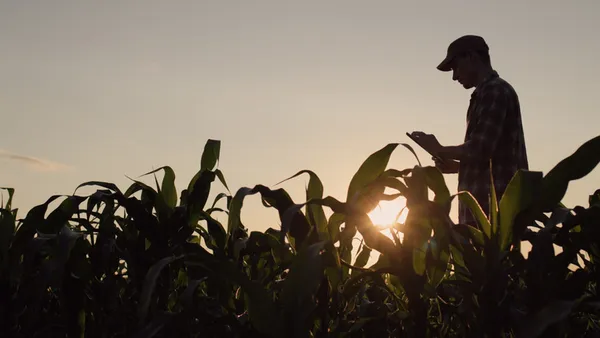Dive Brief:
-
U.S. milk production is increasing with fewer dairies as farms grow larger and more technologically advanced while smaller operations continue to fall behind, according to a recent Agriculture Department report.
-
Annual milk production rose 33% to 226.4 billion pounds from 2003 to 2023, according to the latest USDA data. Meanwhile, the number of dairy herds licensed to sell milk fell 63% over the past two decades to 26,290.
-
An aging workforce and higher production expenses are partially to blame for further consolidation, as well as U.S. policy over the last decade boosting milk production and accessibility to export markets, resulting sometimes in oversupply issues.
Dive Insight:
As high operational costs pressure small farms, larger dairies have been able to survive by leveraging their scale to adopt advanced technologies, management practices and production systems.
Dairies with more than 1,000 cows, for example, increased by 60% from 2002 to 2022, according to the USDA report. Meanwhile, those with smaller herd sizes have declined. Farms with less than 100 cows were most hurt by economic and operational headwinds, falling by more than 70% over the same period.
Looking ahead, Peter Vitaliano, vice president of economic policy and market research, told Brownfield Ag News that he suspects a larger drop in licensed dairies this year. Milk margins have improved with declining feed costs, however, taking some of the pressure off livestock producers compared to corn, soy and other commodity growers.
Although more dairy closures are expected, 2024 milk production is set to increase by more than 500 million pounds over last year, according to a July dairy outlook, driven by technology, genetics and infrastructure advancements to keep up with strong demand for cheese, butter and yogurt.
As dairies move away from antibiotics and hormones due to FDA regulations, farms are leveraging other modern technologies and techniques to improve productivity, according to the 40-page report. Examples include artificial insemination, automatic takeoff devices that release from the udder after milking is finished, and using nutritionists that design rations or purchase feeds. The percentage of dairy farms using computerized milking systems has also doubled from 2000 to 2021.
Additionally, shifts in regional production have occurred as U.S. dairies become bigger and focus solely on milk rather than other commodities. According to the report, Idaho and Texas have increased their share of production over the years, while California, the largest milk-producing state, has lost some of its share.











